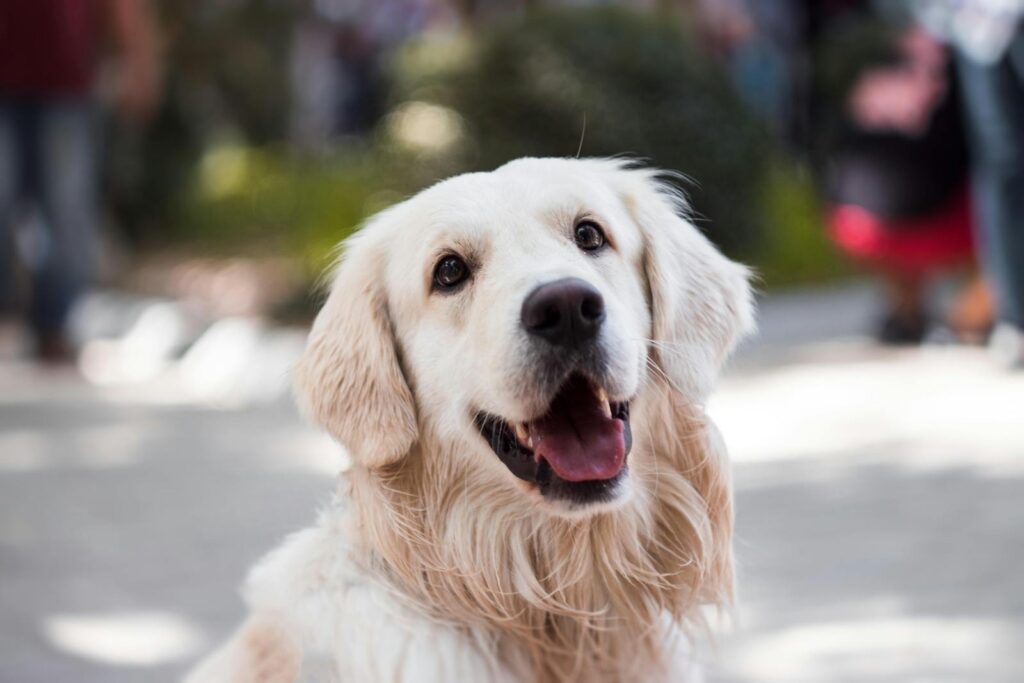Glaucoma is a serious eye condition that affects many dogs, potentially leading to blindness if left untreated. Whether your furry friend is at risk or you’re simply seeking to educate yourself, understanding this condition is crucial. Imagine the discomfort and anxiety your dog must feel when something is wrong with their vision, and how powerless you might feel in such a situation. By learning about glaucoma, you can take proactive steps to ensure your dog’s well-being.
In this article, we’ll cover:
- What glaucoma is and how it affects dogs
- Symptoms to watch out for
- Diagnosis and treatment options
- Preventative measures and tips for dog owners
By the end, you’ll have a comprehensive understanding of glaucoma in dogs and be better equipped to take action if necessary.
What are the primary causes of glaucoma in dogs?
Glaucoma in dogs is primarily caused by an imbalance in the production and drainage of aqueous humor, the fluid inside the eye. This imbalance leads to increased intraocular pressure (IOP), which can damage the optic nerve and result in vision loss. The condition can be broadly categorized into primary and secondary glaucoma. Primary glaucoma is often hereditary and is more common in certain breeds such as Cocker Spaniels, Basset Hounds, and Siberian Huskies. It typically occurs due to anatomical abnormalities in the eye’s drainage angle, which impede the outflow of aqueous humor. This type of glaucoma usually affects both eyes, although it may not do so simultaneously.
Secondary glaucoma arises as a consequence of other eye conditions or injuries. Common causes include uveitis (inflammation of the uvea), lens luxation (dislocation of the lens), and intraocular tumors. These conditions can obstruct the drainage of aqueous humor, leading to increased IOP. Trauma to the eye, such as blunt force or penetrating injuries, can also result in secondary glaucoma. In addition to these direct causes, certain systemic diseases can predispose dogs to glaucoma. For instance, diabetes mellitus can lead to changes in the eye that increase the risk of developing the condition. Similarly, chronic use of corticosteroids, either systemic or topical, can contribute to the development of glaucoma by affecting the eye’s fluid dynamics.
How is glaucoma in dogs diagnosed?
Diagnosing glaucoma in dogs typically begins with a comprehensive eye examination performed by a veterinarian or a veterinary ophthalmologist. This initial assessment often includes a thorough review of the dog’s medical history and any observed symptoms, such as eye redness, cloudiness, or vision loss. One of the primary diagnostic tools used to detect glaucoma in dogs is tonometry. This test measures the intraocular pressure (IOP) within the eye. Elevated IOP is a key indicator of glaucoma. There are several types of tonometers, such as applanation tonometers and rebound tonometers, which can be used to obtain accurate pressure readings.
Gonioscopy is another important diagnostic procedure. This test involves examining the drainage angle of the eye, which is where the aqueous humor fluid exits the eye. By using a special lens, the veterinarian can assess whether the drainage angle is open or closed, helping to determine the type of glaucoma present. Ophthalmoscopy is also commonly employed in diagnosing glaucoma. This technique allows the veterinarian to examine the interior structures of the eye, including the optic nerve and retina. Changes in the optic nerve, such as cupping or atrophy, can be indicative of glaucoma.
In some cases, advanced imaging techniques like ultrasound biomicroscopy or optical coherence tomography (OCT) may be utilized. These methods provide detailed images of the eye’s internal structures, offering further insights into the extent of the disease and any underlying causes. Additionally, veterinarians may perform a Schirmer tear test to evaluate tear production, as dry eye conditions can sometimes mimic or exacerbate glaucoma symptoms. This test helps to rule out other potential eye issues that could be affecting the dog’s vision.
Finally, a thorough physical examination and blood tests may be conducted to identify any systemic conditions that could be contributing to the development of glaucoma. Conditions such as diabetes or hypertension can influence eye health and may need to be managed concurrently.
What are the common symptoms of glaucoma in dogs?
One of the most common symptoms of glaucoma in dogs is eye pain, which may manifest as increased blinking, squinting, or pawing at the eye. Dogs may also show signs of general discomfort or irritability. Another prevalent symptom is redness in the whites of the eyes. This redness is due to the increased pressure within the eye, which causes blood vessels to become more prominent. Cloudiness or a bluish haze over the cornea is often observed in dogs with glaucoma. This occurs because the elevated pressure affects the clarity of the cornea, making it appear less transparent.
Dogs with glaucoma may exhibit dilated pupils that do not respond normally to light. This is due to the pressure affecting the optic nerve and other structures within the eye. Vision loss is a significant symptom of glaucoma in dogs. Initially, this may be subtle and hard to notice, but as the condition progresses, it can lead to partial or complete blindness. Increased tearing or discharge from the affected eye is another symptom. This can be a response to the irritation and discomfort caused by the elevated intraocular pressure.
Behavioral changes, such as reluctance to play, decreased activity levels, or avoiding bright lights, can also indicate that a dog is experiencing the pain and vision impairment associated with glaucoma.
| Symptom | Frequency | Severity |
|---|---|---|
| Redness around the eye | Common | Moderate |
| Cloudiness of the cornea | Common | Severe |
| Discharge from the eye | Occasional | Mild |
| Pupil dilation | Frequent | Severe |
| Enlarged or swollen eye | Common | Severe |
| Sudden blindness | Occasional | Severe |
| Visible pain | Frequent | Severe |
| Reluctance to play | Common | Moderate |
| Decreased activity levels | Common | Moderate |
| Avoiding bright lights | Occasional | Moderate |
What treatment options are available for dogs with glaucoma?
Treatment options for dogs with glaucoma aim to reduce intraocular pressure (IOP) and manage pain. One of the primary methods is the use of medications. Topical eye drops, such as prostaglandin analogs, beta-blockers, and carbonic anhydrase inhibitors, can help decrease the production of aqueous humor or increase its outflow, thereby reducing IOP. In addition to eye drops, oral medications may also be prescribed. These can include carbonic anhydrase inhibitors and osmotic diuretics, which work systemically to decrease fluid production or draw fluid out of the eye, respectively. These medications are often used in acute cases to provide rapid relief from high IOP.
Surgical interventions are another treatment option for dogs with glaucoma. Cyclophotocoagulation is a laser surgery that targets and destroys the ciliary body, reducing the production of aqueous humor. Another surgical option is gonioimplantation, where a drainage implant is placed to facilitate the outflow of aqueous humor. In cases where vision cannot be preserved and the primary goal is pain management, enucleation, or removal of the affected eye, may be considered. This procedure is often recommended when the eye is blind and painful, providing relief and preventing further complications.
Another less invasive surgical option is evisceration with an intraocular prosthesis. This involves removing the internal contents of the eye while preserving the outer structures, followed by the placement of a prosthetic device. This can help maintain the cosmetic appearance of the eye while alleviating pain. For some dogs, a combination of medical and surgical treatments may be necessary to manage glaucoma effectively. Regular monitoring and follow-up with a veterinary ophthalmologist are crucial to adjust treatment plans as needed and to ensure the best possible outcome for the dog.
How can glaucoma in dogs be prevented?
Preventing glaucoma in dogs can be challenging because the condition often has a genetic component, particularly in certain breeds. However, early detection and proactive management can significantly reduce the risk of severe complications. Regular veterinary check-ups are crucial for early diagnosis, especially for breeds predisposed to glaucoma, such as Cocker Spaniels, Basset Hounds, and Shiba Inus. Maintaining a healthy lifestyle for your dog can also play a role in prevention. A balanced diet, regular exercise, and maintaining a healthy weight can support overall eye health. Nutritional supplements rich in antioxidants, like vitamins C and E, may help protect the eyes from oxidative damage.
Monitoring your dog’s eyes for any signs of discomfort or changes is essential. Symptoms such as redness, cloudiness, excessive tearing, or squinting should prompt an immediate visit to the veterinarian. Early intervention can prevent the progression of glaucoma and preserve your dog’s vision. Genetic testing can be a valuable tool for breeders and owners of high-risk breeds. Identifying dogs that carry genes associated with glaucoma can help make informed breeding decisions, potentially reducing the incidence of the disease in future generations.
Environmental factors should also be considered. Protecting your dog’s eyes from trauma and injury can help prevent secondary glaucoma. Avoiding situations where your dog might be exposed to harmful chemicals or irritants can also be beneficial. Regular eye exams by a veterinary ophthalmologist are recommended, especially for older dogs or those with a family history of glaucoma. These specialists can perform advanced diagnostics, such as tonometry to measure intraocular pressure, which is a key indicator of glaucoma.
Conclusion
In summary, glaucoma in dogs is a serious eye condition that requires prompt attention and ongoing care. Early detection is critical for the best prognosis, so keep an eye out for any changes in your dog’s vision or eye health. Treatments are available to manage the condition and prevent further damage, but they often require lifelong monitoring and follow-up care. By understanding the causes, symptoms, and treatment options, you can take an active role in your pet’s eye health and help ensure a better quality of life.



